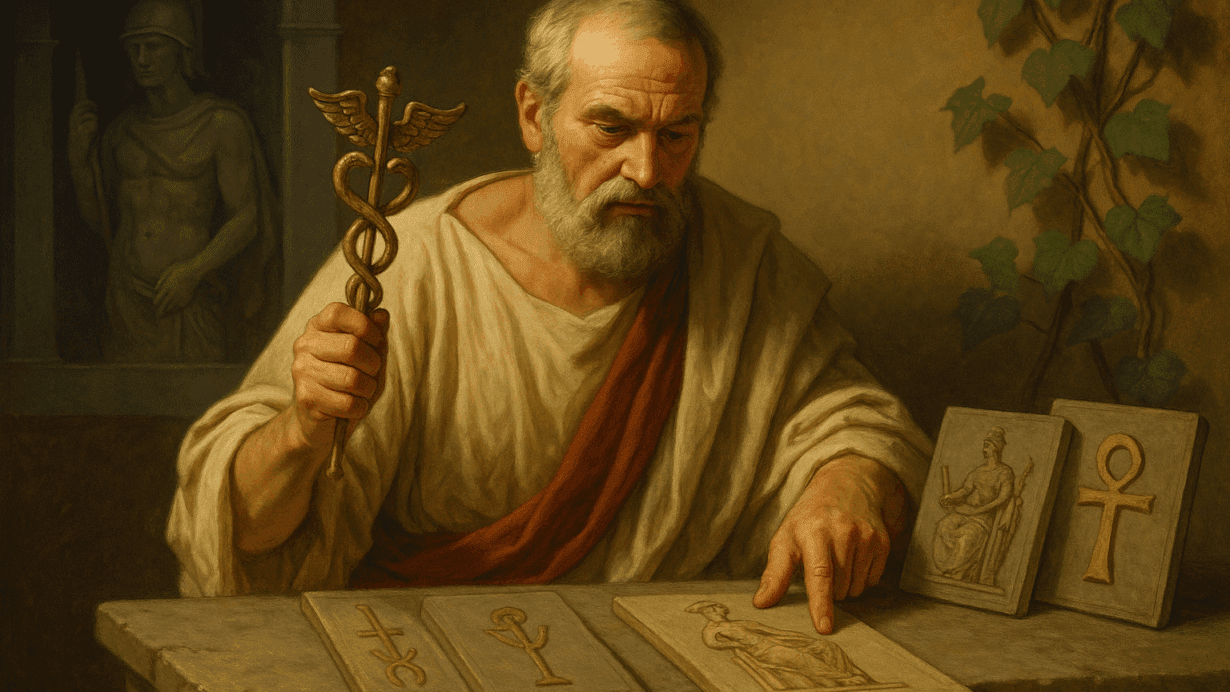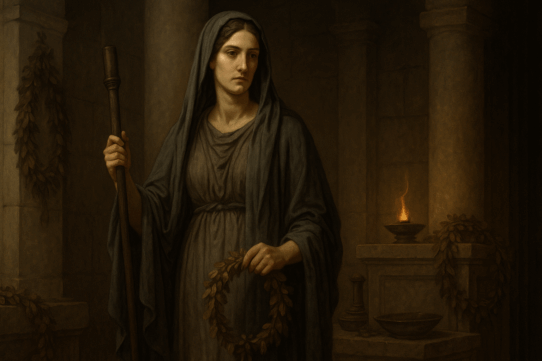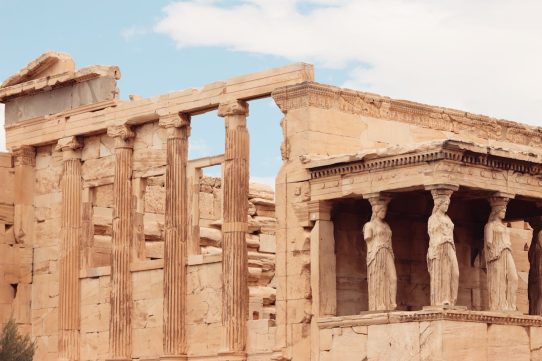QUICK SUMMARY
Interpretatio Romana was the Roman process of identifying foreign gods with Roman ones. By merging different cultures’ deities into a unified framework, Rome created a flexible religious system that helped integrate conquered peoples, maintain order, and expand its influence across the empire.
Understanding Interpretatio Romana
As Rome expanded into a multicultural empire, it encountered dozens of belief systems: Celtic, Greek, Egyptian, Punic, Germanic, Illyrian, and countless local tribal religions. Rather than erase these traditions, the Romans sought to understand them through a familiar lens. The result was interpretatio Romana.
Interpretatio Romana was the Roman practice of explaining or interpreting foreign gods by equating them with Roman deities who shared similar functions. A foreign thunder god, no matter his name, became a form of Jupiter. A goddess of love became Venus. A protector deity aligned with Mars. Through this method, Romans created a shared religious language across vast regions.
It was both a theological tool and a political strategy: by merging divine identities, Rome brought cultural cohesion to its territories while respecting local religious traditions.
Why the Romans Developed Interpretatio
Interpretatio Romana emerged naturally from Rome’s worldview.
A Universal View of the Divine
Romans believed that divine forces existed everywhere under many names. A foreign god was not seen as false, but simply another expression of a power Rome already knew. This made the Roman religion flexible and inclusive.
Practical Governance
The Roman Empire contained diverse populations. By equating gods instead of eliminating them, Rome allowed local people to maintain their identity while still participating in Roman religious life. This approach reduced resistance and strengthened unity.
Desire for Cosmic Order
Romans valued order above all. Categorizing foreign deities helped them impose structure on a chaotic and multicultural world, fitting every divine figure into a hierarchy they understood.
Intellectual Curiosity
Roman priests and scholars were deeply interested in how other cultures worshipped. Interpretatio Romana provided a framework to compare myths, symbols, rituals, and divine attributes.
Through these motivations, interpretatio became a hallmark of Roman religion.
Key Examples of Interpretatio Romana
The Romans created hundreds of divine equivalences during their expansion. Below is a clear, organized table summarizing the most significant pairings across different cultures.
Major Interpretatio Romana Pairings
| Culture | Local Deity | Roman Equivalent | Reason for Identification |
|---|---|---|---|
| Greek | Zeus | Jupiter | Both supreme sky fathers wielding thunder |
| Hera | Juno | Queenship, marriage, and protection of women | |
| Ares | Mars | War gods, but Romans reframed Mars as noble and orderly | |
| Aphrodite | Venus | Love, beauty, fertility connections | |
| Hermes | Mercury | Messenger gods, trade, travel, cunning | |
| Celtic / Gaulish | Lugus | Mercury | Trade, skill, craftsmanship, eloquence |
| Taranis | Jupiter | Thunder, sky power, celestial authority | |
| Camulus | Mars | War, sky, guardianship of tribes | |
| Epona | Mater Matuta / Ceres | Fertility, horses, prosperity | |
| Germanic | Donar (Thor) | Jupiter | Thunder and weather control |
| Wodan (Odin) | Mercury | Wisdom, travel, prophecy, guide of souls | |
| Tiwaz (Týr) | Mars | Battle, honor, warrior virtue | |
| Egyptian | Isis | Venus or Ceres | Motherhood, magic, fertility |
| Serapis | Jupiter or Pluto | Divine rulership, afterlife, healing | |
| Horus | Apollo | Solar radiance and kingship | |
| Gaulish & Iberian | Teutates | Mars or Mercury | Protector god with war and trade aspects |
| Nodens | Neptunus | Waters, hunting, healing | |
| Endovelicus | Aesculapius | Health, prophecy |
This table helps illustrate how Rome mapped the divine world into a structured system.
How Interpretatio Shaped Roman Religion
Interpretatio Romana had profound consequences for the structure and growth of Roman religion.
A Religion That Absorbed Rather Than Destroyed
Unlike many empires that imposed their gods by force, Rome strengthened loyalty by welcoming local gods into its divine family. A conquered people rarely felt expected to abandon their traditions; they were simply taught to understand them through Roman categories.
Hybrid Temples and Cults
Across the empire, archaeologists have discovered inscriptions dedicated to gods with blended names, such as:
- Jupiter-Ammon
- Mars-Neton
- Mercury-Lugus
- Hercules-Magusanus
- Sulis-Minerva (in Britain)
These hybrid cults became bridges between cultures, showing how deeply interpretatio shaped religious life.
Local Survival Through Roman Documentation
Many Celtic, Iberian, and Germanic gods are known today only because Romans wrote down their names when pairing them with Roman equivalents. Interpretatio unintentionally preserved cultures that might otherwise have vanished.
A More Stable Empire
Religious unity helped maintain political unity. Shared divine symbols and reinterpretations smoothed tensions in newly conquered lands and encouraged people to view Rome’s gods as compatible with their own.
Interpretatio Romana vs Interpretatio Graeca
While Romans identified foreign gods using Roman equivalents, the Greeks had their own version, interpretatio graeca, which explained foreign deities using Greek ones.
Romans used both systems, depending on context. For example:
- A Celtic sky god might be equated with Zeus by Greek merchants.
- Later, Roman priests would reinterpret him again as Jupiter, adding Italic religious significance.
This layered reinterpretation created a multicultural divine network.
Challenges and Limitations
Despite its success, interpretatio Romana had weaknesses.
Oversimplification of Complex Gods
A foreign god might have dozens of roles, rituals, and cultural meanings. Reducing them to a single Roman counterpart often erased nuance.
Imperial Power Dynamics
Although respectful of foreign gods, interpretatio was still part of a system that placed Roman categories above all others. Rome’s interpretation became official, even if locals disagreed.
Some Cults Resisted Assimilation
Mystery religions such as:
- Mithras
- Cybele
- The Great Mother
- The cult of Isis
retained strong individual identities even after reaching Rome. They were respected but not fully assimilated.
Still, interpretatio Romana shaped the spiritual architecture of the empire more than any other religious tool.
The Enduring Legacy
Interpretatio Romana did more than organize Rome’s empire — it shaped how the Western world remembers ancient religion. Many deity pairings taken for granted today originate from this Roman system. The idea that Zeus and Jupiter are “the same god,” or that Venus is simply Aphrodite with a new name, traces directly back to Roman interpretation.
By blending gods, preserving myths, and writing down divine equivalences, Rome left behind a vast, interconnected map of mythology whose influence continues in modern scholarship, art, and storytelling.
Interpretatio Romana is, above all, a reminder of how adaptable and curious Roman religion was — a system built on the belief that divine truth could wear many names.








